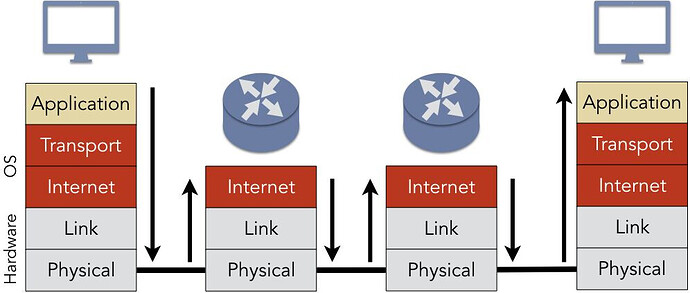IP packets can be transmitted over a variety of network technologies, like Ethernet, MPLS, PWE3.
IP transmission is the foundation of the Internet, and it is used by a wide variety of applications, such as web browsing, email, and file transfers.
VLAN
A VLAN is a logical network that is created within a physical network.
VLANs are created to segment a physical network into smaller, more manageable networks.
VLANs can be used to improve security, performance, and scalability.
QinQ
QinQ (Qin in Qin) is a tunneling protocol that is used to encapsulate one VLAN inside another VLAN.
QinQ is used to extend VLANs across multiple networks or to create hierarchical VLAN structures.
QinQ is also used to implement provider-bridged networks, where a service provider provides VLAN services to its customers.
MPLS
MPLS (Multiprotocol Label Switching) is a packet-forwarding technique that is used to create high-performance, scalable networks.
MPLS uses labels to identify and forward packets.
MPLS is used by a wide variety of network operators, including Internet service providers and enterprise networks.
PWE3
PWE3 (Pseudowire Emulation Edge-to-Edge) is used to transport Layer 2 traffic over Layer 3 networks.
PWE3 is used to interconnect data center networks, extend Layer 2 networks over WANs, and provide Layer 2 services to customers.
PWE3 is a lightweight and scalable encapsulation technology.
VRF
A VRF (virtual routing and forwarding) is a routing instance that is isolated from other routing instances.
VRFs are used to create multiple routing domains within a single network.
VRFs are used to improve security, performance, and scalability.
Some facts
-
Lots of loop prevention mechanisms in Transmission networks like TTL , STP , RSTP
-
ERPS is a protection mechanism for Ethernet traffic in a fiber ring topology and allow loop prevention
-
OSPF area used with microwave Links in mangment, most common area types is stub and totally stub
-
QinQ is a vlan stacking protocol , it’s main purpose is to extend the vlan ID range by using 4096 * 4096
-
RSVP is a very important protocol used in label assignment, tunnels mangment and LSP bandwidth reservation
-
traffic engineering is used to efficiently use all network resources ( paths ) to avoid underutilized and over utilized paths / routes
-
VRF is virtual routing and forwarding and it’s used to enable multiple VPN s to be coexisting on the same router/ infrastructure by separation the VPN services
-
MPLS networks has multiple types of routes : customer edge ( IP only ), provider edge ( label & IP ), provider ( labels only )
-
PWE3 is a Pesudo wire technology aims to encapsulate the non packet traffic in to tunnels and Transport it through packet switching network
-
PWE3 used to efficiently allow the coexisting between legacy TDM networks to transport clients SDH / E1s traffic along packet switching networks
LinkedIn: ![]()
